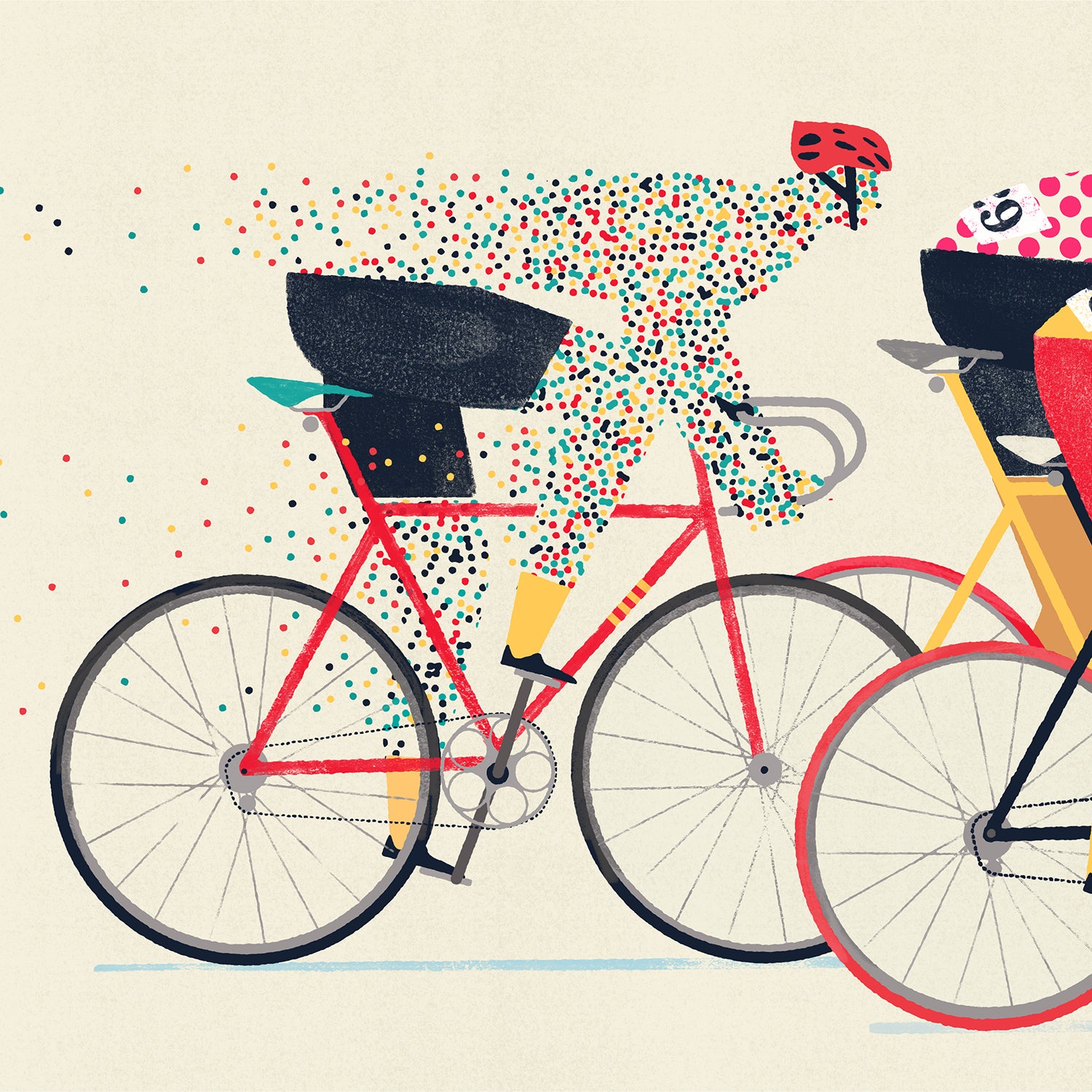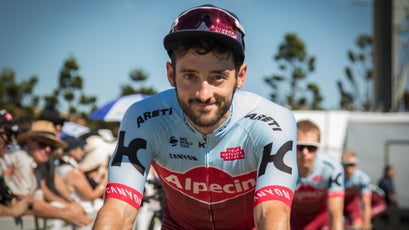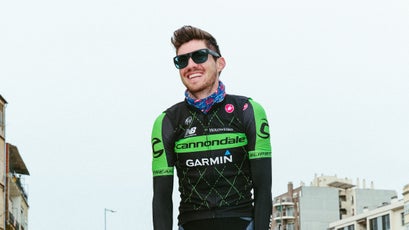Yes, dopers suck. And it’s true that no sport has been as plagued by performance-enhancing drugs as professional cycling. In the early 20th century, riders used cocaine (to pedal faster) and morphine (to hurt less). The extreme doping that turned Tour de France cyclists into superhumans started in the early nineties. It was about a decade later that Lance Armstrong settled on his favorite cocktail, an elaborate mix that included injections of EPO to boost the amount of oxygen his blood could carry, IV bags of his own blood that he’d siphoned during the off-season to further heighten oxygen levels, and testosterone patches to aid in muscle recovery. Consider that age the Open Class Doping Era. It lasted about 20 years.
As my friend and colleague John Bradley wrote in these pages almost 12 years ago, “To hell with pro cycling.”
That was a defensible position in the wake of the 2006 Tour, when Floyd Landis rode an incredible 80-mile solo breakaway to win back the yellow jersey—only, of course, to be busted for doping a few days later. (I was in France at the time, and trust me, the French saw that one coming.) Landis’s shame arrived just two years after Tyler Hamilton was caught with another cyclist’s blood in his body. There were many liars and cheats during Open Class Doping, especially among the Americans.
But now I’m here to say: To hell with boycotting pro cycling.
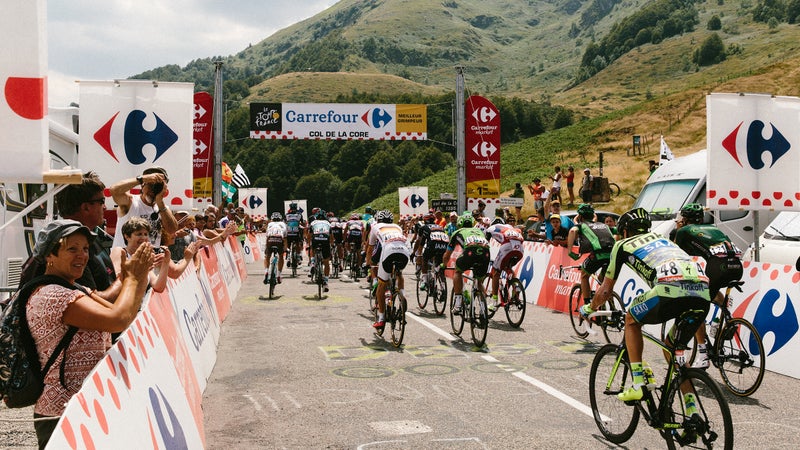
Do I believe the peloton is suddenly clean? Not at all. But the truth is, I never stopped watching, even as generations of dopers put their own glory before cycling. Fans of other sports have made the same choices. Did America quit watching baseball because Barry Bonds (a bike-racing fan, as it happens) had to start wearing bigger hats in his thirties? Hell no. They just came to terms with the fact that most of the home-run records set during the steroid era were bogus. Many will also admit that watching Bonds peel the skin off balls was pretty damn fun. Cycling is no different. I can shamelessly say that, at the time, watching doping Lance Armstrong battle doping Jan Ullrich was the height of entertainment.
Like other pro sports, cycling continues to have serious issues. The drugs didn’t disappear with Lance and Landis, though they have certainly faded. Easily detected EPO may well be a thing of the past, and so too synthetic testosterone. But clearly some riders are still dosing themselves with their own blood. Meanwhile, many cyclists have turned to abusing legal drugs for marginal gains, getting away with it through therapeutic-use exemptions, or TUEs. According to this rule, if you crashed yesterday, then you can take powerful painkillers today. Riders cheat the system by grinding up opioids and pouring them into espresso and honey smoothies—so-called finish bottles—that let them go harder with less pain in the final miles of a race. Four-time Tour champion Chris Froome has been accused of taking so much asthma medicine at last year’s Vuelta a España that the air on his home planet must be albuterol mist. Then there are the wilder theories about gene therapy and hidden motors that might not be as wild as they seem.
Still, even the strictest cynic will admit that the sport is getting cleaner. French cycling is often pointed to as a beacon of hope. Why? Because the French were so devastated by doping, which brought their national pastime to its knees, that they’d guillotine any countryman caught cheating. A source closely tied to World Tour bike racing told me that 50 or 60 percent of this year’s Tour riders might be spotless, with another 10 or 20 percent in a gray area of TUE abuse.
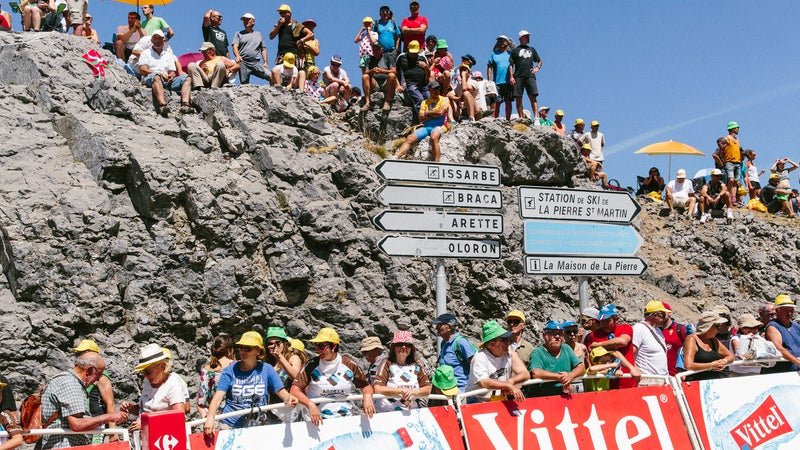
One massive upside: races are close again. TUEs aren’t EPO. It’s still cheating, but these aren’t the 15 percent gains we saw when racers risked their lives pumping blood as thick as syrup through their veins. Top riders now routinely crack and drop out of contention. Stage winners look more exhausted than they used to. And we see far fewer superhuman efforts. Attacks come in the final few hundred yards of the biggest climbs, where a clean rider has a chance at besting a TUE cheat. Victories are often measured in bike lengths.
I find all that hopeful. But even if a handful of dirty riders churning out impossible wattage disappoint me once again, I’ll still be watching. I stopped believing in Santa Claus at age six (thanks, older brother) and stopped believing in God shortly thereafter (thanks, books), but I still love Christmas (thanks, pie). There’s just too much to love about the Tour for me to ever dump it. I’ve been a fan since the days of Greg LeMond, arguably the last winner (in 1990) without a cloud of suspicion shadowing him. It’s worth tuning in just for the scenery—the colors of France in high summer pale any other sporting venue. But it’s when scripted plans go awry and the favorites attack each other that I forget to care about who’s clean and who’s not. In film this is called the suspension of disbelief; the drama trumps the doubt. Maybe you have to ride bikes to understand the type of pain these athletes endure, or the courage it takes to risk one’s entire career to go all out for a stage win, or the ecstacy or despair that awaits each decision.
If your biggest challenge to watching the Tour is needing a rider to cheer, you can join me in rooting for Aussie Nathan Haas, the 2012 Tour of Britain champion (awarded after the winner lost the title for doping) or Alex Howes, an American who’s raced in two previous Tours, plus the Vuelta and the Giro d’Italia. Both are coached by Colby Pearce, a 100 percent clean racer in his day who is committed to working only with clean cyclists. I see Pearce on group rides in Boulder, Colorado, where I live, and I recently asked him if there was a chance his guys are on the sauce. His answer: “They sleep in my house. We eat dinner together. There’s just no way.”
Haas placed fourth in the Amstel Gold Race in the Netherlands last year, one of the spring classics on the cycling calendar. Afterward, he described the final miles to a reporter. While Haas was trying to hold the wheels of the two lead riders, he felt the world closing in on him just before he hit his limit. “My vision actually went dark on the outside, and I could just see the wheel in front,” he said. “And I’m on his wheel and… I just couldn’t. And it wasn’t from lack of trying. I wanted it so bad.”
Would it all be that much sweeter if we were certain that every pro cyclist was fueled by that same pure desire? Doubtless. But we owe it to the clean riders to keep watching. We’ve long since ridden out cycling’s darkest hours. How can we not ride out the dawn?
Marc Peruzzi writes �����ԹϺ��� Online’s Out of Bounds column.


